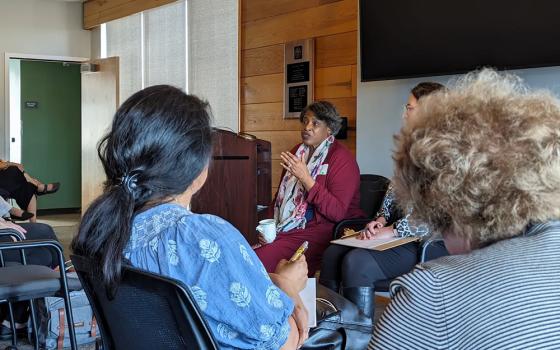 Editor's note: This essay was published in the Jan. 9th issue of the National Catholic Reporter and was written before the current Israeli military actions in the Gaza.
Editor's note: This essay was published in the Jan. 9th issue of the National Catholic Reporter and was written before the current Israeli military actions in the Gaza.
As Barack Obama enters the oval office in just over two weeks he will face a series of daunting challenges. One of these is confronting the age-old Israeli-Palestinian conflict, which has been seriously, yet unsuccessfully, tackled by every American president since Jimmy Carter.
The inability to reach a peaceful solution has not only had fatal repercussions for the people residing in Israel and the occupied territories, but has also been detrimental to Middle East stability and to vital U.S. interests in the region.
In recent years, some of the hurdles facing those political leaders who want to reach a peace agreement based on the two-state solution have only grown. The Palestinians are in the midst of an internal fray between the old guard of Fatah and the fundamentalist Hamas ideologues, and currently there is no agreed-upon leadership with which one can negotiate.
The Israeli political arena has also become much more polarized, and it will be practically impossible for whichever party wins the upcoming elections to sign a comprehensive peace agreement with the Palestinians, not least because the settler movement and its supporters will control a critical block in the Knesset.
President-elect Obama, however, has a crucial advantage over his predecessors. Several years of political negotiations, from the Madrid conference in 1991, through Oslo, Camp David, Taba and Annapolis, alongside the publication of different initiatives, from the Geneva Initiative and the Saudi Plan to the Nussaiba and Ayalon Plan, have clarified what it would take to reach a peace settlement between the warring sides.
The two-state solution entails three central components.
- First, Israel's full withdrawal to the 1967 border with possible one-for-one land swaps so that ultimately the total amount of land that was occupied will be returned.
- Second, Jerusalem's division according to the 1967 borders with certain land swaps to guarantee that each side has control over its own religious sites and large neighborhoods. Both these clauses entail the dismantlement of Israeli settlements and the return of the Jewish settlers to Israel.
- Third, the acknowledgment of the right of return of all Palestinians but with the following stipulation: While all Palestinians will be able to return to the fledgling Palestinian state, only a limited number agreed upon by the two sides will be allowed to return to Israel; those who cannot exercise this right or, alternatively, choose not to, will receive full compensation.
While the conditions that need to be satisfied in order to reach a peace agreement are well-known, and even though most political leaders understand that the only way to provide real security for the two peoples is by signing a comprehensive agreement, years of negotiations have produced only limited results.
The cruel irony is that the majority of Jews and Palestinians in the region support the two-state solution, but, nonetheless, the two parties cannot reach an agreement because sizable minorities in both camps reject this solution. These minorities have managed to hijack the respective political arenas and have succeeded in creating a deadlock that can only be overcome if the international community, and particularly the United States, assumes a more interventionist role.
With determination and political boldness, Obama can neutralize the rejectionist minorities and resolve this bloody conflict once and for all. We believe that he can achieve this objective if his administration adopts the following strategy:
- First, the White House needs to draft a proposal using the abovementioned guidelines.
- Second, the draft proposal should be submitted to the two sides so that each one can suggest minor alterations.
- Third, the Obama administration will have to hammer out a final proposal (i.e., the Obama plan).
Finally, this proposal should be publicized and brought to a referendum in both Israel and the occupied territories, with the United States and international community applying pressure by declaring that the two parties will be rewarded if they support the initiative and penalized if they do not.
Thus, the majority of the people on each side, and not the local leadership or a rejectionist minority, will decide whether or not to accept the peace plan.
Obama's political vision has engendered hope not only in the United States, but, as his appearance in Berlin and the post-election jubilation suggests, in the various populations of the world as well.
Our expectation is that he will make good on his promise for change and introduce a courageous initiative that will bring peace to Israelis and Palestinians. He has both an opportunity and a responsibility to do so.
[Yinon Cohen is professor of Israel and Jewish Studies at Columbia University, New York. Neve Gordon is the chair of the department of politics and government, Ben-Gurion University of the Negev, Israel, and is the author of Israel's Occupation, just published by the University of California Press. His Web site is http://www.israelsoccupation.info.






